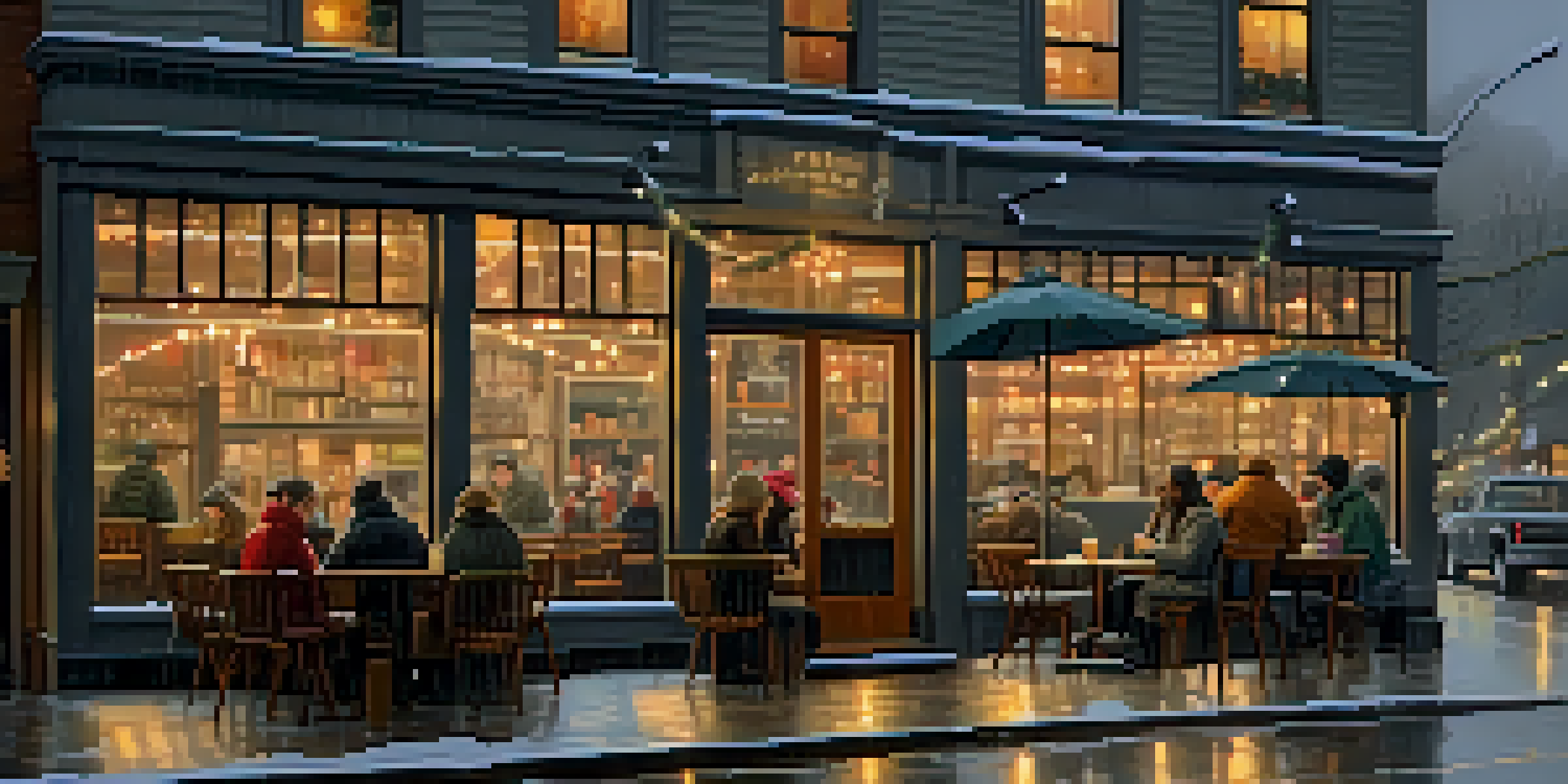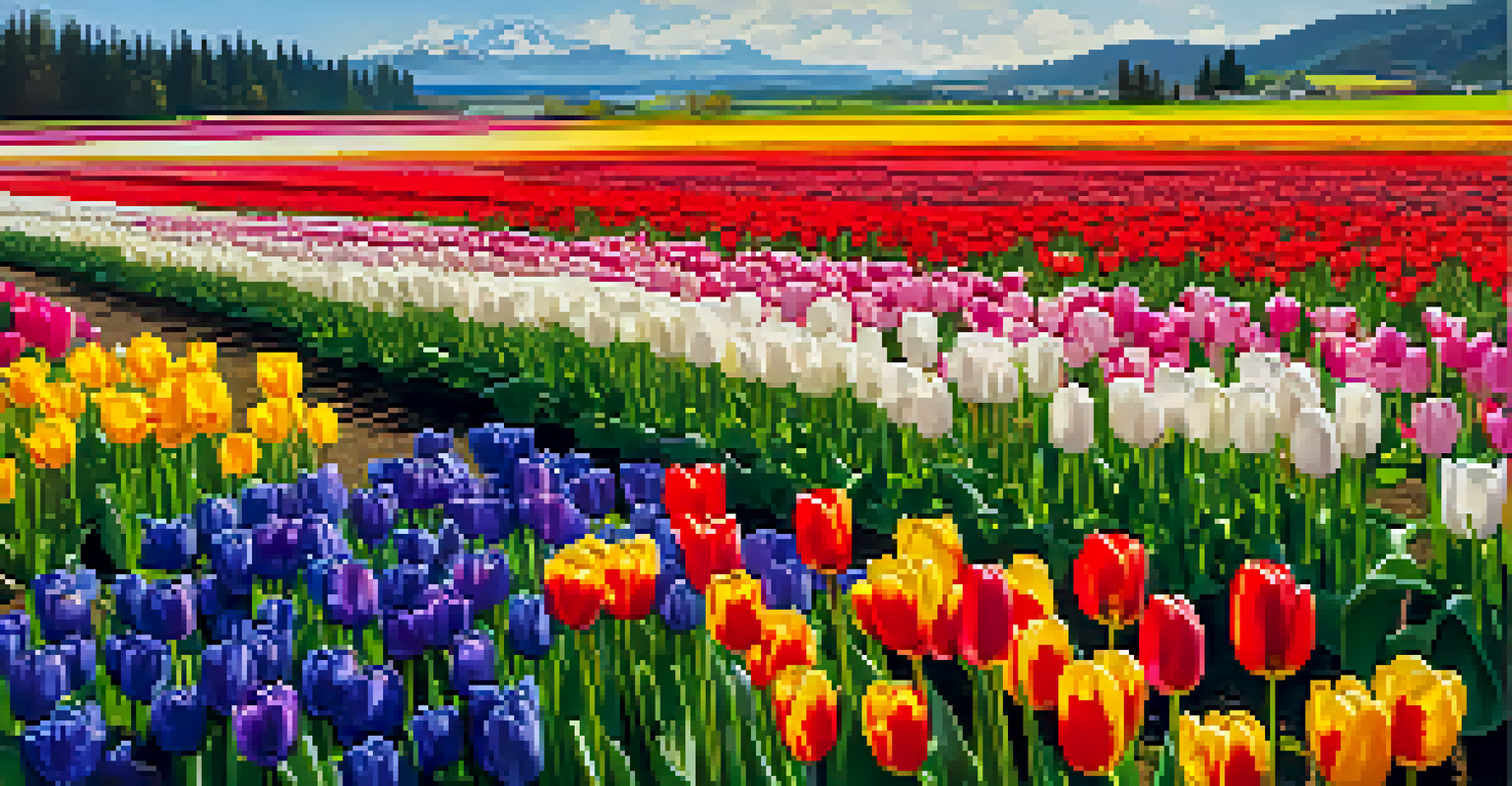Seasonal Changes in Seattle: Weather Patterns Throughout the Year

Winter in Seattle: A Cozy, Rainy Wonderland
Winter in Seattle typically spans from December to February, bringing chilly temperatures and plenty of rain. While snow is a possibility, especially in the surrounding mountains, city streets usually see more drizzles than flakes. The average temperature hovers around the mid-40s°F, making it a perfect time for cozy sweaters and warm drinks. Despite the gloom, many locals embrace the season, enjoying indoor activities like visiting coffee shops or exploring museums.
Seattle is the only city in America that has a major airport that is not connected to the rest of the country by any major highway.
The rainiest months are often December and January, contributing to Seattle's reputation for being a wet city. However, this moisture is essential for the lush greenery that defines the Pacific Northwest. The overcast skies may seem dreary, but they create a unique atmosphere that many residents cherish. Plus, winter offers a chance to enjoy the beautiful holiday lights that adorn neighborhoods and parks, transforming the city into a festive wonderland.
While winter may not be everyone's favorite season, it does have its charm. Locals often take advantage of the nearby mountains for skiing and snowboarding, providing a quick escape from the urban environment. The season is also a time for reflection and warmth, as families gather indoors to share stories and create memories. So, while you might need an umbrella, the cozy moments of winter in Seattle are truly special.
Spring in Seattle: Blooming Beauty and Mild Weather
Spring in Seattle, from March to May, marks a transition from the drizzly days of winter to a vibrant and colorful season. As temperatures gradually climb into the 50s and 60s°F, the city comes alive with blooming cherry blossoms and tulips, creating picturesque landscapes. Events like the Skagit Valley Tulip Festival attract visitors eager to witness nature's artistry. The longer days and emerging sunshine make spring a favorite time for outdoor activities.

Rain still graces the season, but it's often interspersed with sunny days, leading to what locals affectionately call 'liquid sunshine.' This mix can be refreshing, and you'll likely see people enjoying picnics in parks or strolling along the waterfront. The increased daylight also brings a sense of optimism and energy, motivating residents to shake off the winter blues and embrace the outdoors. Spring is a time to reconnect with nature and rejuvenate the spirit.
Seattle's Seasonal Charm
Each season in Seattle offers unique experiences, from cozy winter gatherings to vibrant spring blooms and lively summer festivals.
As the flowers bloom and the weather warms, spring in Seattle invites everyone to experience the beauty of the city. Local farmers' markets begin to flourish, offering fresh produce and handmade goods. This season encourages exploration, whether it’s hiking in nearby trails or simply enjoying a cup of coffee outside. Spring is a reminder that change can be beautiful, showcasing the resilience and vibrancy of Seattle.
Summer in Seattle: Warm Days and Outdoor Adventures
Summer, stretching from June to August, is often considered the best time to visit Seattle, boasting warm, sunny days and mild evenings. Temperatures typically range from the mid-70s to low 80s°F, creating ideal conditions for outdoor activities. Locals take full advantage of the weather by exploring the city's many parks, beaches, and waterfront attractions. The iconic Pike Place Market buzzes with energy, making it a must-visit during this vibrant season.
The rain falls on the just and the unjust alike, but the just may have the better umbrellas.
With the longer daylight hours, summer evenings are perfect for barbecues and gatherings with friends. Many residents partake in outdoor concerts, festivals, and movies in the park. The Seattle International Beerfest and various music festivals attract both locals and tourists, transforming the city into a lively summer haven. This season also brings an array of fresh produce, and you can taste the best of the Pacific Northwest through local farmers' markets.
However, summer in Seattle isn't just about fun; it also offers a chance to appreciate the natural beauty surrounding the city. Day trips to Mount Rainier or the San Juan Islands are popular, providing breathtaking views and opportunities for hiking or kayaking. As the sun sets over the Puget Sound, the sky transforms into a stunning palette of colors, reminding everyone that summer in Seattle is truly unforgettable.
Fall in Seattle: A Tapestry of Colors and Crisp Air
Fall in Seattle, from September to November, brings a stunning transformation as the leaves change colors and the air turns crisp. This season is characterized by comfortable temperatures ranging from the 50s to 70s°F, perfect for enjoying the outdoors. The vibrant fall foliage creates an enchanting backdrop for walks through parks and neighborhoods. It's a time when locals take out their flannels and enjoy the seasonal flavors, like pumpkin spice lattes.
Rain begins to return in October, reminding residents that winter is just around the corner. However, this shouldn’t deter you from exploring, as the rain adds a magical quality to the scenery. Farmers' markets continue to thrive, offering harvest-themed events and delicious produce. Many people take part in apple picking and visiting pumpkin patches, which have become beloved fall traditions.
Understanding Rain and Microclimates
Seattle's reputation for rain is often exaggerated, with its unique microclimates creating diverse weather experiences across neighborhoods.
As Thanksgiving approaches, the spirit of gratitude fills the air, encouraging gatherings with family and friends. Fall also provides an opportunity for reflection, as the changing seasons remind us of the ever-evolving nature of life. From cozy nights by the fire to festive holiday preparations, fall in Seattle is a season of warmth, connection, and beauty.
Weather Patterns: Understanding Seattle's Rainy Reputation
Seattle's weather patterns are often misunderstood, leading to its notorious rainy reputation. While the city does experience a fair amount of rainfall, much of it falls during the winter months. The unique geography, including mountains and the Puget Sound, influences local weather, creating microclimates that can vary dramatically within just a few miles. Understanding these patterns can help residents and visitors prepare for their adventures in the Emerald City.
Interestingly, Seattle receives about 37 inches of rain annually, which is less than cities like New York and Miami. The rain tends to come in light to moderate showers, rather than heavy downpours, leading to the misconception that the city is perpetually drenched. This consistent drizzle contributes to the lush greenery and beautiful landscapes that Seattle is known for. It's all about perspective—what some may see as gloomy weather is actually a vital part of the region's ecosystem.
The city's climate is classified as temperate maritime, resulting in mild, wet winters and dry, warm summers. This allows for a range of outdoor activities throughout the year, making Seattle an appealing place for nature lovers. Once you embrace the rain and the beauty it brings, it becomes clear that Seattle's weather is part of its charm, adding to the unique experience of living in or visiting this vibrant city.
The Role of Microclimates in Seattle's Weather Experience
One fascinating aspect of Seattle's weather is the presence of microclimates, which create varied weather patterns across different neighborhoods. For example, while it may be raining in Ballard, just a few miles away in West Seattle, the sun could be shining. These microclimates are influenced by factors such as elevation, proximity to water, and urban development. Understanding these nuances can enhance your experience in the city, allowing you to dress appropriately and plan activities accordingly.
The rain shadow effect created by the Olympic Mountains also plays a significant role. This phenomenon means that areas west of the mountains receive significantly more precipitation than those to the east. Consequently, neighborhoods closer to the Sound may experience milder weather compared to those further inland. This unique geography allows residents to enjoy diverse outdoor activities, whether it's hiking in the mountains or relaxing by the beach.
Preparing for Changing Weather
Layering and staying informed about weather patterns can enhance your enjoyment of Seattle's outdoor activities year-round.
Embracing Seattle's microclimates can lead to delightful surprises. Locals often share tips on which parks are best to visit on sunny days or where to find shelter from unexpected showers. By exploring different areas, you can fully appreciate the city's diverse weather and its impact on daily life. So, whether you're a resident or a visitor, understanding these microclimates will help you make the most of your time in Seattle.
Preparing for Seattle's Changing Weather: Tips and Tricks
Navigating Seattle's ever-changing weather can be a challenge, but with a little preparation, you can enjoy all that the city has to offer. Layering is key, as temperatures can fluctuate throughout the day. A light jacket, an umbrella, and comfortable shoes can make all the difference, allowing you to adapt to whatever the weather may bring. Many locals swear by keeping a spare pair of socks in their bag for those unexpected rainy moments.
Checking the weather forecast before heading out is a habit that can save you from getting caught in a downpour. Apps and websites provide real-time updates, helping you plan your day accordingly. Additionally, be mindful of the time of year, as certain seasons bring specific weather patterns. For example, in spring, you might encounter quick rain showers followed by bursts of sunshine, while summer typically offers more consistent warmth.

Lastly, don’t forget to embrace the unique weather; after all, it’s part of Seattle's charm. Many locals find joy in the rain, participating in fun activities like rain photography or cozying up in their favorite café with a good book. By being prepared and maintaining a positive attitude, you can truly enjoy the beauty of Seattle, no matter the season.